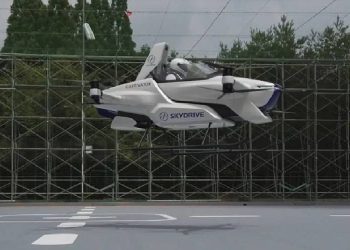The Indian Space Research Organization (ISRO) launched the Nisar (NASA-ESRO Synthetic aperture Radar) mission today, July 30. Nisar was launched by a GSLV-S16 rocket from Satish Dhawan Space Center located in Sriharikota, Andhra Pradesh at 5:40 pm on Wednesday. This is the first mission in which such a satellite will be placed in the sun-contemporary orbit for the first time by a GSLV rocket.
The sun-contemporary orbit is the orbit in which the satellite passes through the poles of the earth and whenever it passes through a particular location, the sunlight is the same. NASA has provided an L-band for Nisar while ISRO has provided a S-band for the synthetic aperture radar. This will make it possible to collect large amounts of data. This satellite will transmit comprehensive data related to the earth, including Antarctica, North Pole and Oceans.
Governments of every country will use it
Nisar will collect data from around the world and will be used for commercial and scientific purposes. Quuluru said, ISRO will process this data and make most of them available as open-sores, so that users around the world can easily access it. With this we will be able to monitor seasonal changes, including changes in the forests, the position or location of the mountains, and the seasonal changes, including the activities of glaciers in areas such as the Himalayas and Antarctica.
Data from the entire earth in 12 days
According to ISRO, the projection of the NASA-ESRO synthetic aperture radar (NISAR) satellite will prove to be an important landmark in a more than a decade long cooperation between the two space agencies. ISRO said that this satellite would scan the entire earth every 12 days and provide high-resolution data day and night every season. The satellite will be able to identify very subtle changes on the surface of the earth, such as a change in vegetation, migration of snow sheets and soil discoloration.
ISRO said that the mission would help in many important areas, such as observation of sea surface, search of ships, monitoring of storms, changes in soil moisture, mapping of surface water resources and disaster management. This satellite will detect some cracks in the ground due to a change in earthquake or snow sheets.
This satellite works on two bands
GSLV-F18 will place this satellite in a 743 km high sun-communication orbit. The inclination of which will be 98.40 degrees. Nisar is the world's first satellite to observe the earth. It has two different bands (L-band of NASA and S-band of ISRO). Due to which it will also be able to collect data from the bottom of the dense forests. The head of the ISRO said this is a very important satellite. It has two main payloads. There is a S-band payload. Which has been fully developed by ISRO in its Ahmedabad lab and the second-the L-band payload developed by JPL America. Both payloads have been integrated into a satellite.
It took 10 years to make Nisar. It has a special 12 meter gold mesh antenna which is the largest in the earth's low orbit. It is connected to ISRO's I-3K satellite bus with systems for command, data, propulsion and direction control and 4 KW solar energy.




















 July 30, 2025
July 30, 2025












